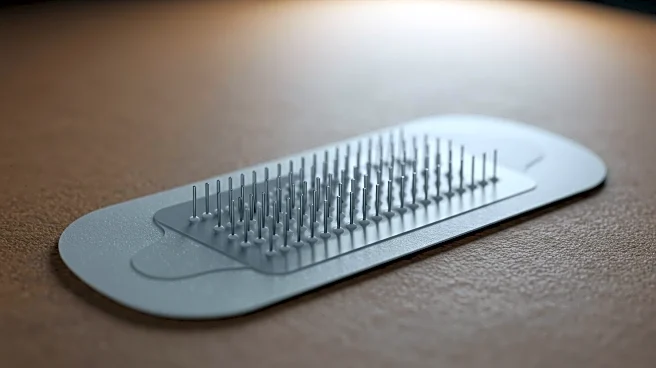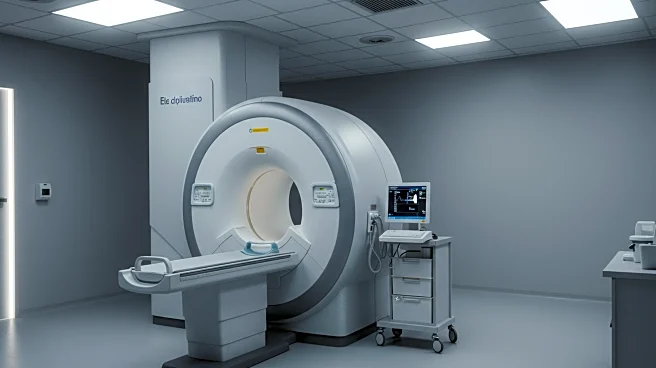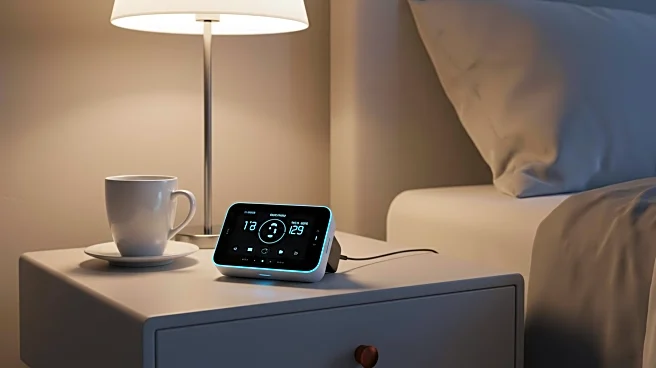What is the story about?
What's Happening?
A new self-powered microneedle patch has been developed to monitor biomarkers without the need for drawing blood. This patch collects dermal interstitial fluid (ISF) from beneath the skin's surface, which contains nearly all the biomarkers found in blood. The patch is composed of four layers: a polymer housing, a gel layer, a paper layer, and microneedles. The microneedles swell upon contact with ISF, allowing fluid to move into the paper layer for storage. This method offers a cleaner sample and streamlines the biomarker testing process, according to Michael Daniele, the corresponding author of the study.
Why It's Important?
The development of this microneedle patch represents a significant advancement in medical diagnostics. By eliminating the need for blood samples, it reduces discomfort for patients and simplifies the testing process for healthcare professionals. This technology could lead to more efficient and less invasive health monitoring, potentially improving patient compliance and outcomes. It also opens up possibilities for continuous monitoring of health conditions, which could be particularly beneficial for managing chronic diseases.
What's Next?
Further research and development are likely needed to refine the technology and ensure its reliability and accuracy in various clinical settings. Regulatory approval will be necessary before the patch can be widely used in healthcare. If successful, this innovation could be integrated into wearable health devices, providing real-time health monitoring and data collection.
Beyond the Headlines
The ethical implications of continuous health monitoring should be considered, particularly regarding data privacy and consent. As this technology advances, it will be crucial to establish guidelines to protect patient information and ensure ethical use.
AI Generated Content
Do you find this article useful?











